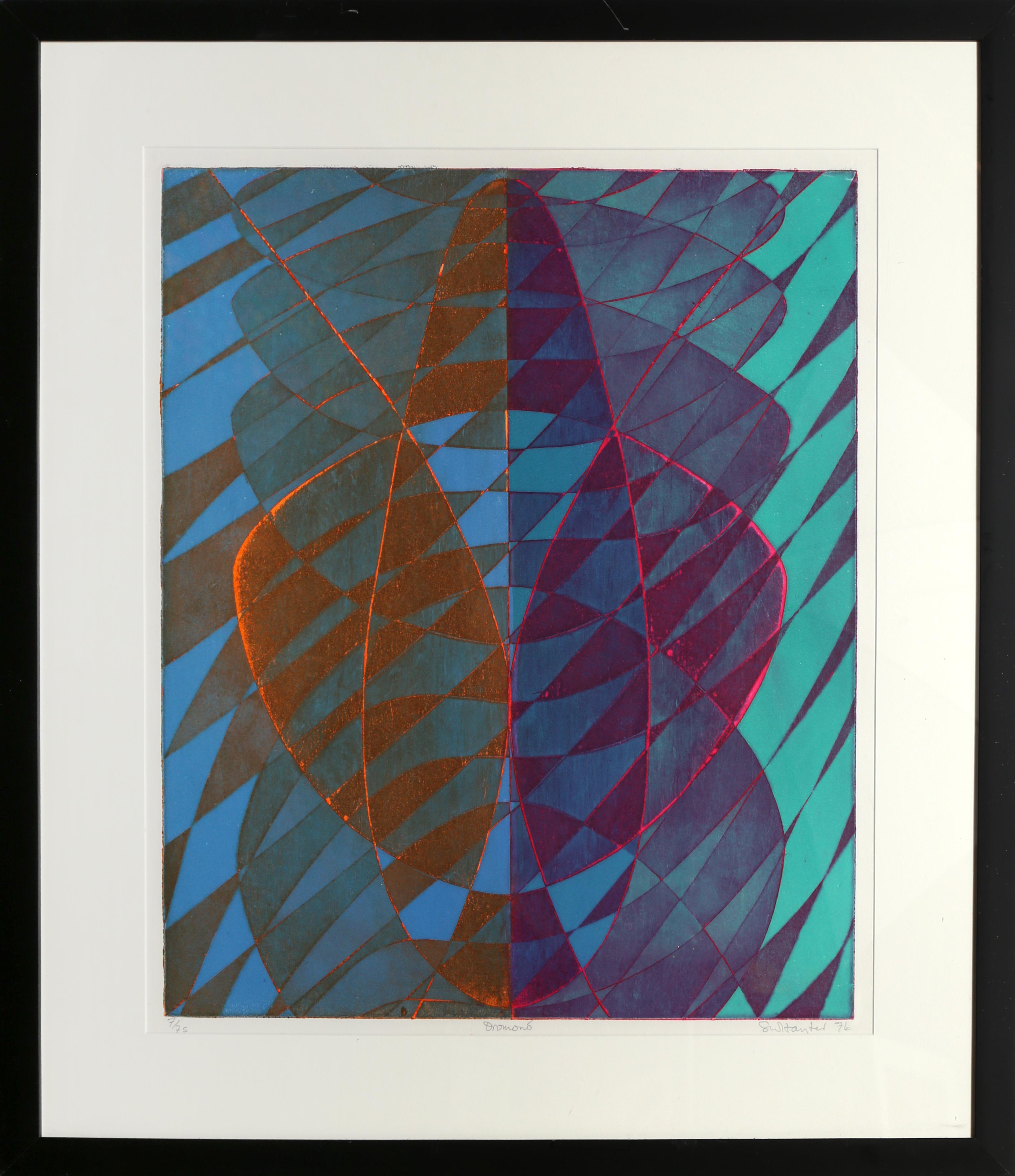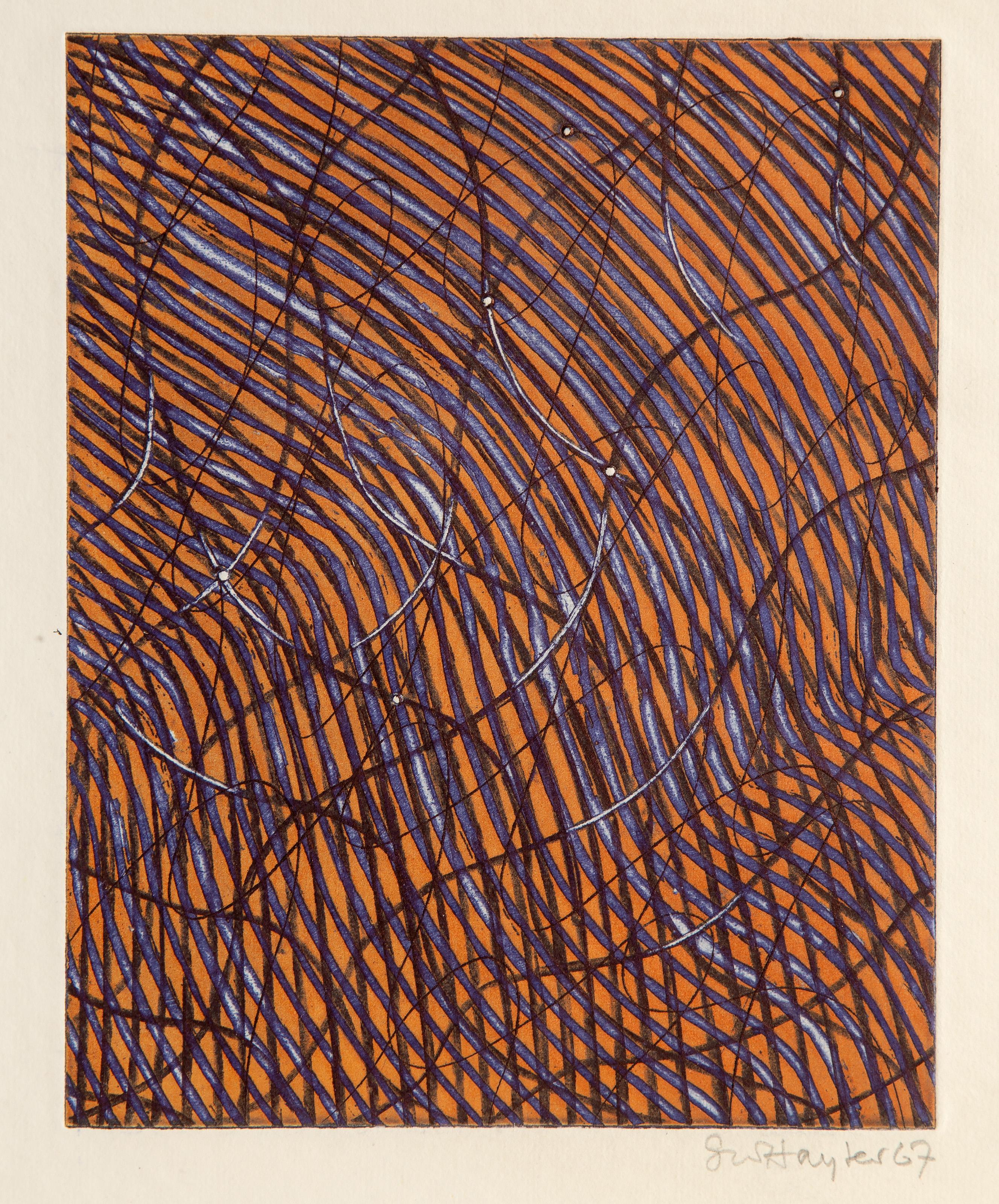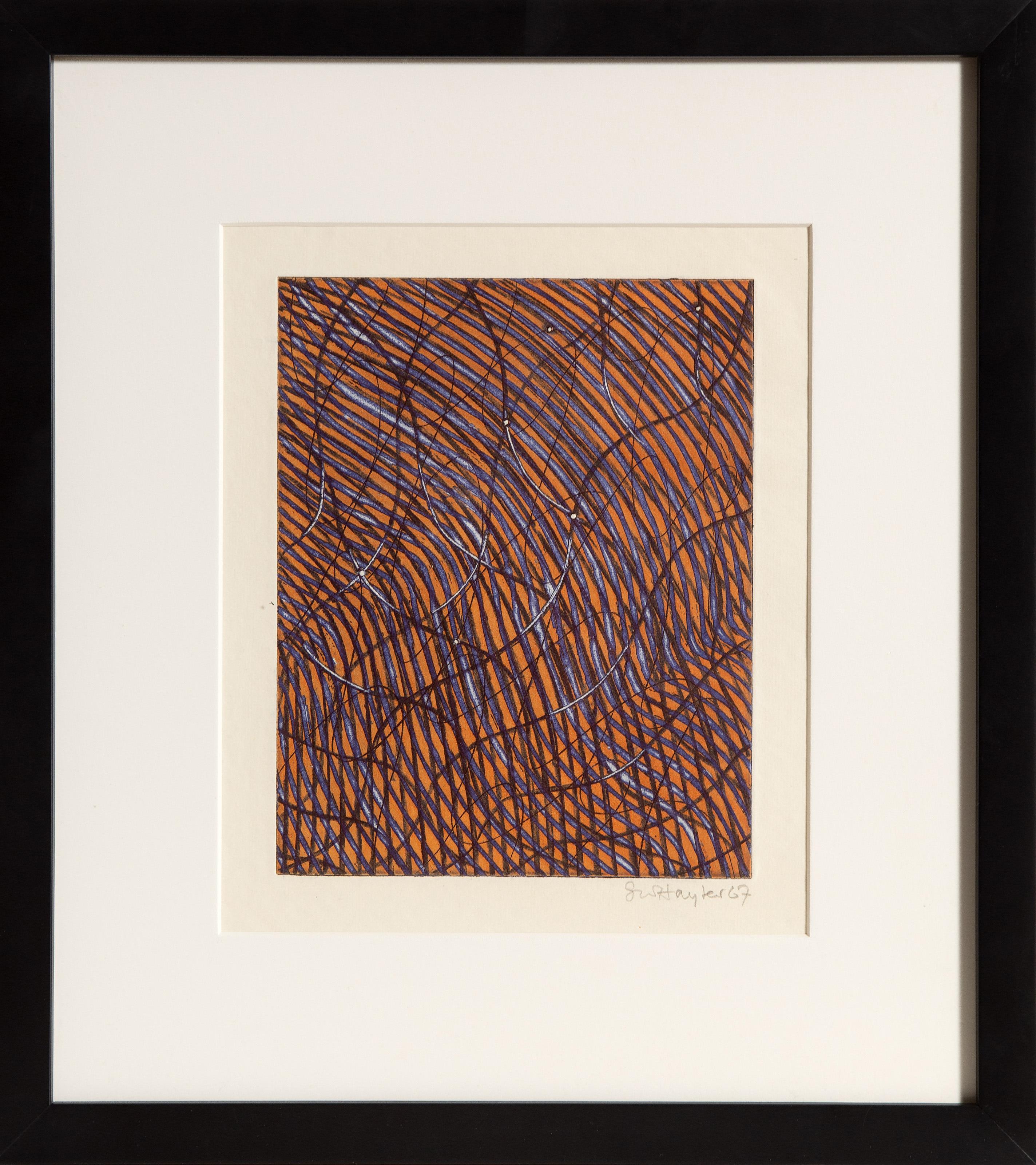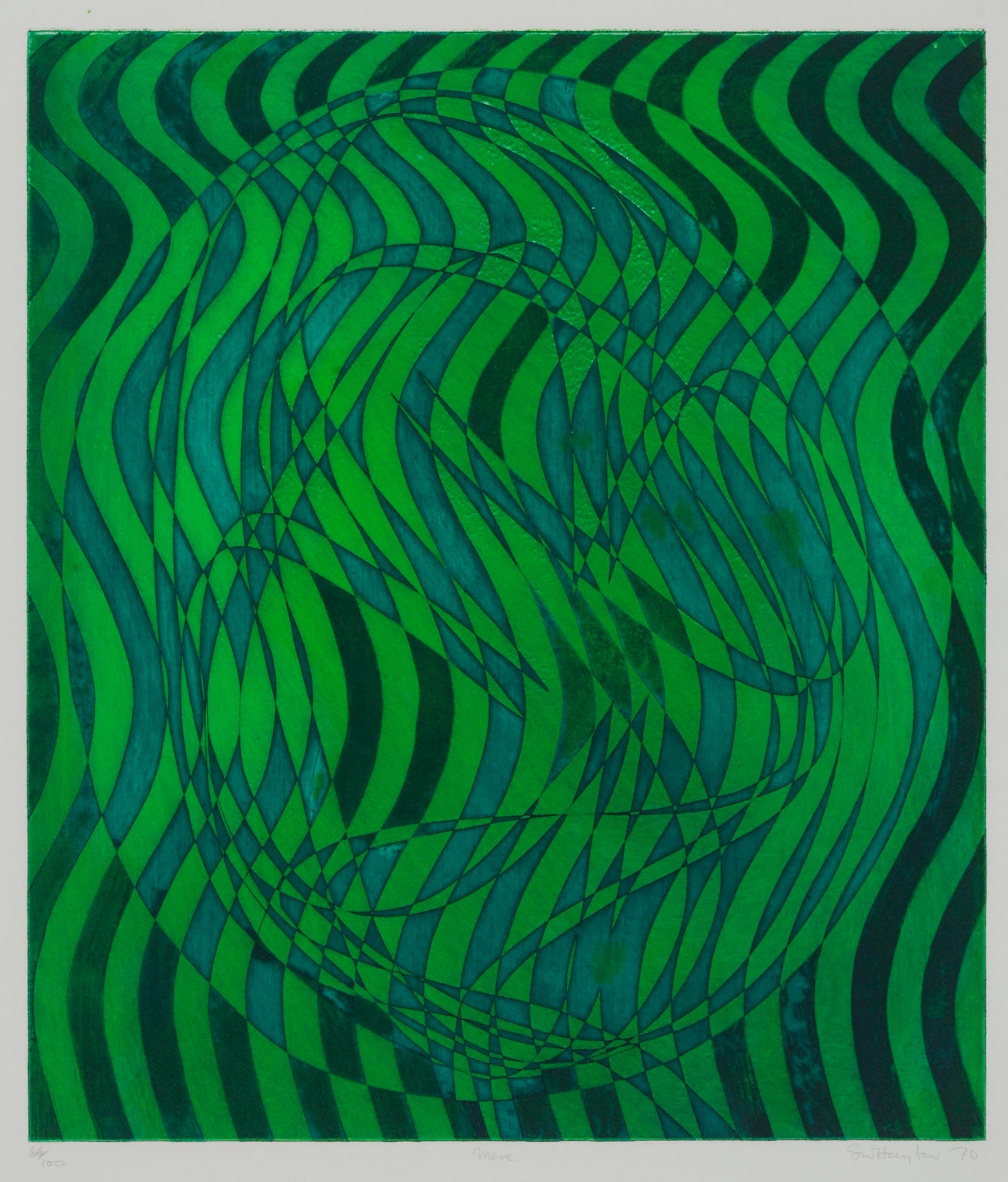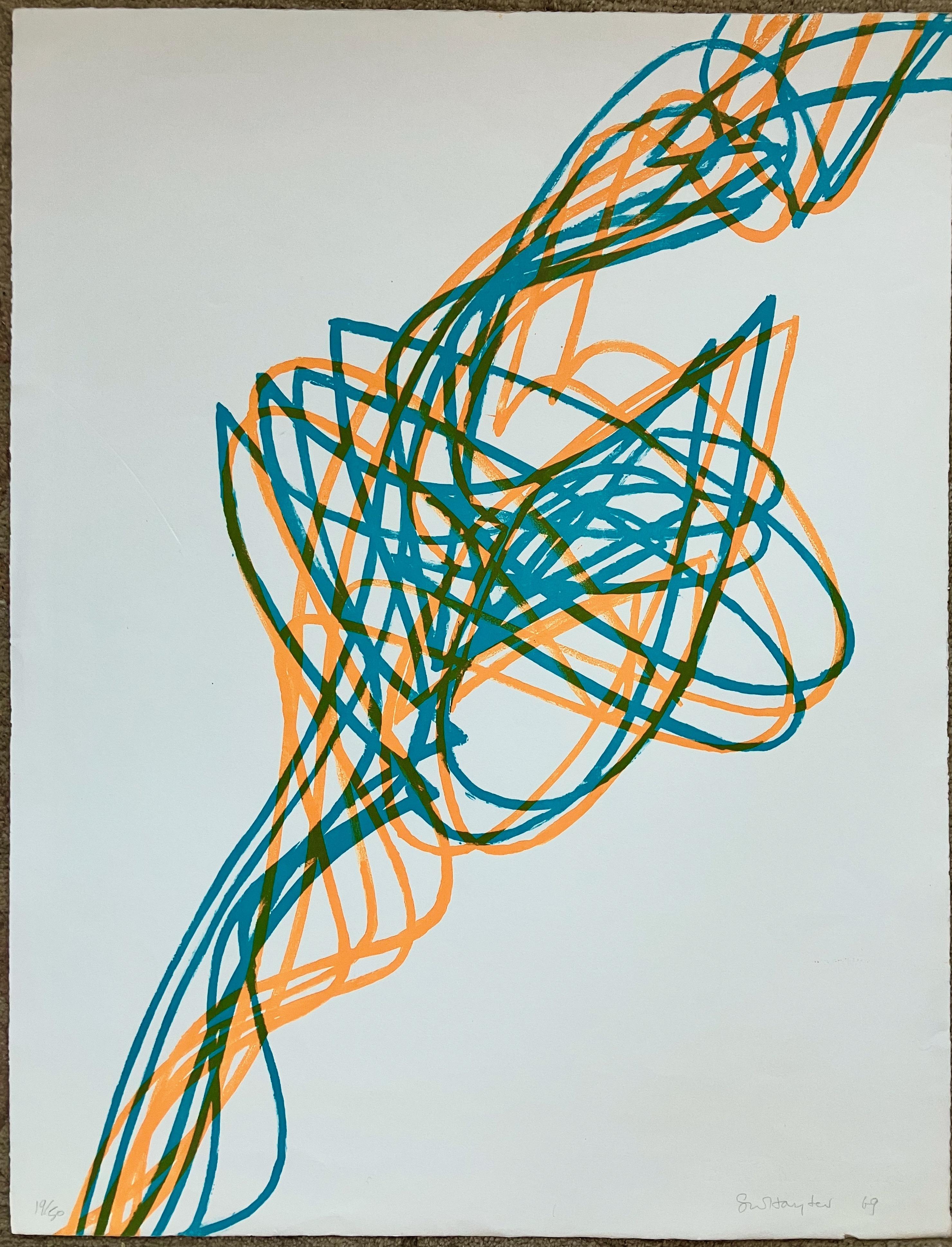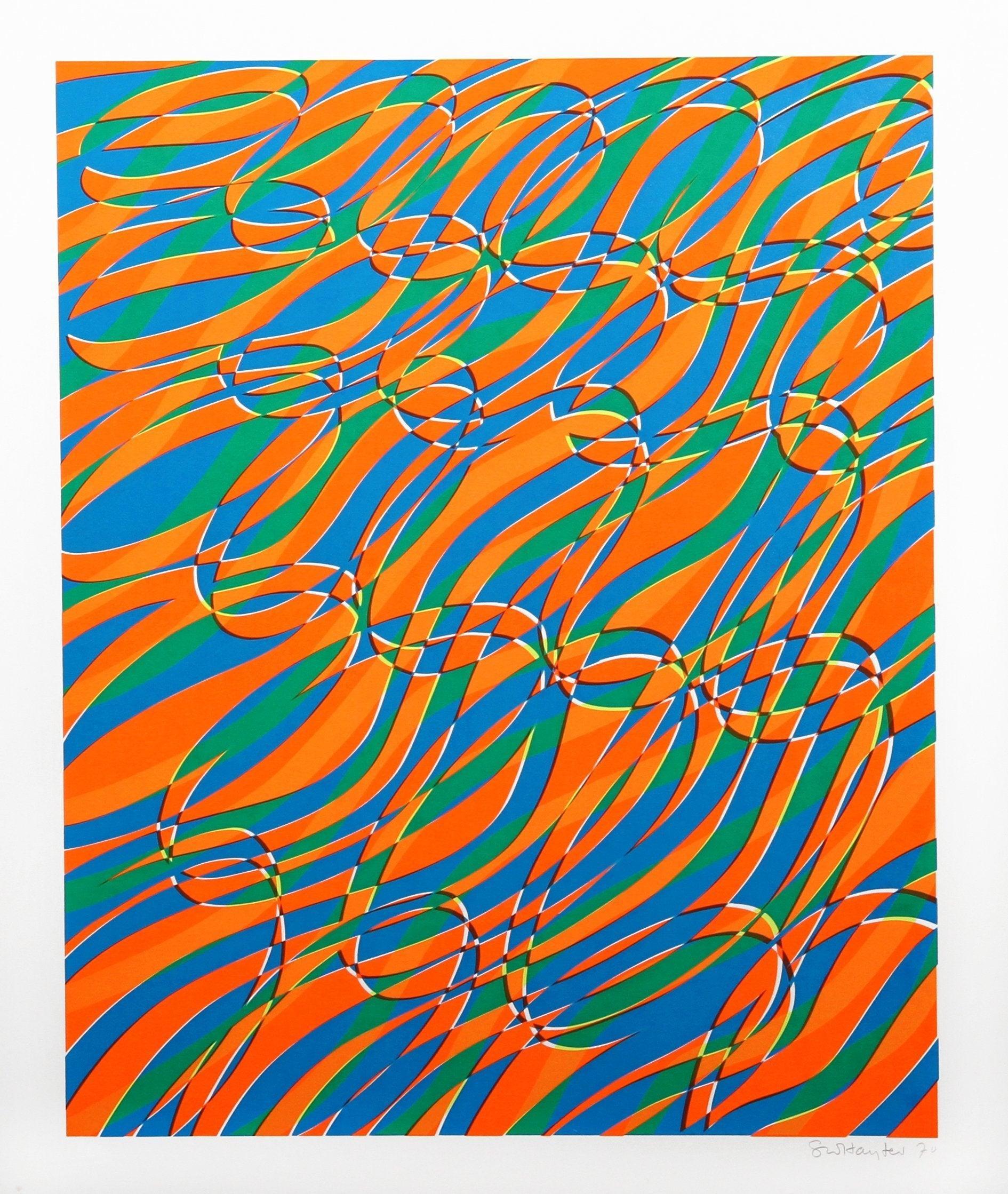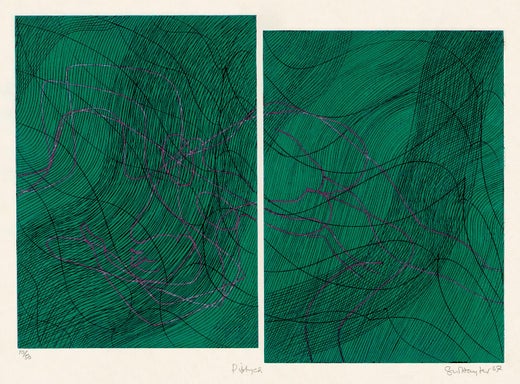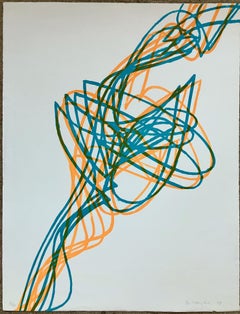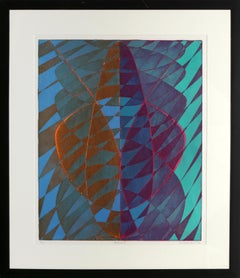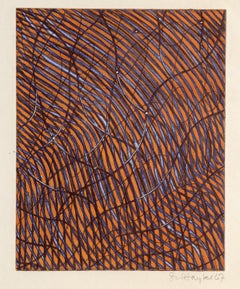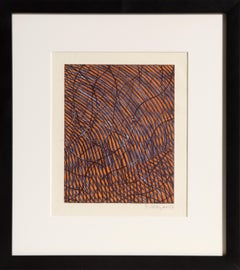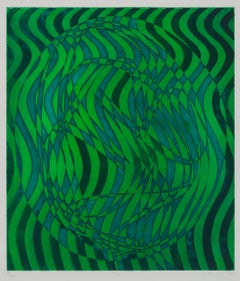Items Similar to Calculus - Color Viscosity Etching
Want more images or videos?
Request additional images or videos from the seller
1 of 9
Stanley William HayterCalculus - Color Viscosity Etching1971
1971
$1,800
£1,405.57
€1,595.55
CA$2,589.33
A$2,818.76
CHF 1,485.89
MX$34,131.53
NOK 18,733.23
SEK 17,543.98
DKK 11,910.24
About the Item
Artist: Stanley William Hayter (1901-1988 )
Title: Calculus
Date: 1971
Medium: Etching and soft-ground etching
Image Size: 23.5 x 19 inches
Sheet size: 30 x 22 inches – BFK Rives paper
Signature: signed, dated lower right
Publisher: La Tortue Gallery, Santa Monica, CA
Printer: Hector Saunier
Catalogue Raisonne: B&M 353
Edition: 100 plus 5 artist’s proofs. This one: 57/100
This exceptional color viscosity etching is an excellent example of Stanley William Hayter’s iconic printmaking. He is the founder of Atelier 17, and as such, one of the most influential printmakers of the 20th century. Viscosity printing is a multi-color printmaking technique that incorporates principles of relief printing and intaglio printing. It was pioneered by Stanley William Hayter. This is an absolutely beautiful print; it is an exceptional composition with rich, saturated colors. The print is titled “Calculus”. It was published in 1971, and is B&M 353 in the catalog raisonne. The print has full margins and is in very good condition, never framed. There is a bit of slight rippling on the upper and lower edges, barely visible. Please see photographs.
Stanley William Hayter CBE (27 December 1901 – 4 May 1988) was an English painter and printmaker associated in the 1930s with surrealism and from 1940 onward with abstract expressionism. Regarded as one of the most significant printmakers of the 20th century, in 1927 Hayter founded the legendary Atelier 17 studio in Paris. Since his death in 1988, it has been known as Atelier Contrepoint. Among the artists who frequented the atelier were Pablo Picasso, Alberto Giacometti, Joan Miró, Alexander Calder, Marc Chagall, Nemesio Antúnez, Jackson Pollock, Mark Rothko, Wassily Kandinsky, Mauricio Lasansky, K.R.H. Sonderborg, Flora Blanc and Catherine Yarrow.
Career:
Early Career: In 1926, Hayter went to Paris, where he studied briefly at the Académie Julian. That same year, he met Polish printmaker Józef Hecht, who introduced Hayter to copper engraving using the traditional burin technique. Hecht helped Hayter acquire a press for starting a printmaking studio for artists young and old, experienced and inexperienced, to work together in exploring the engraving medium. In 1927, Hayter opened the studio, and in 1933 he moved it to No. 17, rue Campagne-Première, where it became internationally known as Atelier 17.
Hayter worked with many contemporary artists to encourage their exploration of printmaking as a medium. Artists such as Miró, Picasso and Kandinsky collaborated on creating print editions (Fraternité and Solidarité) to raise funds for the support of the Republican cause in the Spanish Civil war.
Mid Career: At the outbreak of World War II, Hayter moved Atelier 17 to New York City and taught printmaking at the New School. Artists such as Jackson Pollock, Mauricio Lasansky and Mark Rothko made prints at the New York Atelier 17. During the war, Hayter collaborated with British artist, historian and poet Roland Penrose and others in setting up a commercial camouflage business: the Industrial Camouflage Research Unit. He also first produced finished prints with the method he called "simultaneous color printing," where colour was added to inked intaglio plates by means such as colour-ink-soaked rags, stencils, or rolling a thicker, more viscous ink over a thinner ink, where the thicker ink is rejected and adheres only to the surface surrounding the first ink.
Hayter acted as advisor to the Museum of Modern Art for the show Britain at War. In connection with the exhibition, he devised an analogue computer to duplicate the angle of the sun and shadow lengths for any time, day and latitude.
Later Career: Returning to Paris in 1950, Hayter took Atelier 17 with him. Hayter was a prolific printmaker, completing more than 400 works in the medium before his death. In 1949 his book, New Ways of Gravure, was published by Pantheon Books, INC. NY. Oxford University Press published About Prints in 1962. His students included Carmen Gracia.
Hayter’s Legacy and Innovations: Hayter continued to develop painting alongside printmaking. His interest in automatism led him to associate with the Surrealists, and in the United States he was an innovator in the Abstract Expressionism movement. His legacy in printmaking, which came to dominate its instruction in the American academy, was a vigorous opposition to preparatory drawings and retroussage or hand-wiping with whiting, and endorsement of strong plate tone and improvisation.
In 2005 the Tate Archive acquired Hayter's papers.
He is noted for his innovative work in the development of viscosity printing (a process that exploits varying viscosities of oil-based inks to lay three or more colours on a single intaglio plate).
Hayter was equally active as a painter, "Hayter, working always with maximum flexibility in painting, drawing, engraving, collage and low relief has invented some of the most central and significant images of this century before most of the other artists of his generation", wrote Bryan Robertson.
- Creator:Stanley William Hayter (1901-1988, British)
- Creation Year:1971
- Dimensions:Height: 30 in (76.2 cm)Width: 22 in (55.88 cm)Depth: 0.1 in (2.54 mm)
- Medium:
- Movement & Style:
- Period:
- Condition:Very good condition, not framed. There is a bit of slight rippling on the upper and lower edges, barely visible in my photographs.
- Gallery Location:San Francisco, CA
- Reference Number:Seller: PM01222023-11stDibs: LU666311611802
Stanley William Hayter
Stanley William Hayter was an exponent of the surrealism in the 1930s, who turned to abstract expressionism in the 1940s. He is known as one of the most important print makers of the 20th century, and is know to have championed abstract expressionism in printmaking, through his studio and art school, Atelier 17. Hayter's works are in the collections of almost every modern art museums in the world, including the MoMA, the Whitney, the Guggenheim, Tate Modern, and Centre Pompidou.
About the Seller
5.0
Platinum Seller
Premium sellers with a 4.7+ rating and 24-hour response times
Established in 1999
1stDibs seller since 2017
852 sales on 1stDibs
Typical response time: 1 hour
- ShippingRetrieving quote...Shipping from: San Francisco, CA
- Return Policy
Authenticity Guarantee
In the unlikely event there’s an issue with an item’s authenticity, contact us within 1 year for a full refund. DetailsMoney-Back Guarantee
If your item is not as described, is damaged in transit, or does not arrive, contact us within 7 days for a full refund. Details24-Hour Cancellation
You have a 24-hour grace period in which to reconsider your purchase, with no questions asked.Vetted Professional Sellers
Our world-class sellers must adhere to strict standards for service and quality, maintaining the integrity of our listings.Price-Match Guarantee
If you find that a seller listed the same item for a lower price elsewhere, we’ll match it.Trusted Global Delivery
Our best-in-class carrier network provides specialized shipping options worldwide, including custom delivery.More From This Seller
View AllVolubilis
By Stanley William Hayter
Located in San Francisco, CA
Artist: Stanley William Hayter (1901-1988 )
Title: Volubilis
Date: 1969
Medium: Lithograph
Image Size: 25.75 x 19.75 inches
Sheet size: 25.75 x 19.75 inches – BFK Rives paper
Signature: signed, dated lower right
Publisher: Desjoberts, Paris
Catalogue Raisonne: B&M 331
Edition: 50 plus 10 proofs. This one: 19/50
This exceptional color lithograph is an excellent example of Stanley William Hayter’s iconic printmaking. He is the founder of Atelier 17, and as such, one of the most influential printmakers of the 20th century. Volubilis was published in 1969, and is B&M 331 in the catalog raisonne. The print is in good condition aside from soft handling creases, stray printing ink in the lower right corner, 6 in. surface rub upper left corner which is barely visible upon very close inspection. Please see photographs.
Stanley William Hayter CBE (27 December 1901 – 4 May 1988) was an English painter and printmaker associated in the 1930s with surrealism and from 1940 onward with abstract expressionism. Regarded as one of the most significant printmakers of the 20th century, in 1927 Hayter founded the legendary Atelier 17 studio in Paris. Since his death in 1988, it has been known as Atelier Contrepoint. Among the artists who frequented the atelier were Pablo Picasso, Alberto Giacometti, Joan Miró, Alexander Calder, Marc Chagall, Nemesio Antúnez...
Category
1960s Abstract Abstract Prints
Materials
Paper, Lithograph
Invocation
By Stanley William Hayter
Located in San Francisco, CA
Artist: Stanley William Hayter (British, 1901-1988)
Title: Invocation
Year: 1939
Medium: Etching
Edition: Numbered 63/100 in pencil
Paper: Barcham Green handmade paper
Image (plate ...
Category
Mid-20th Century Abstract Abstract Prints
Materials
Etching
Cheiromency
By Stanley William Hayter
Located in San Francisco, CA
Artist: Stanley William Hayter (British,1901-1988)
Title: Cheiromency
Year: 1935
Medium: Engraving
Edition: Numbered 63/100 in pencil
Paper: Barcham Green Handmade
Image (plate...
Category
Mid-20th Century Abstract Abstract Prints
Materials
Etching
Untitled
By Charles Arnoldi
Located in San Francisco, CA
Artist: Charles Arnoldi (American, born 1931)
Title: Untitled
Year: 2001
Medium: Off set lithograph
Edition: Numbered XXIX 54/115 in pencil
Image size: 17 x 17 inches
Signat...
Category
Late 20th Century Abstract Geometric Abstract Prints
Materials
Offset
Untitled
By Charles Arnoldi
Located in San Francisco, CA
Artist: Charles Arnoldi (American, born 1931)
Title: Untitled
Year: 2001
Medium: Off set lithograph
Edition: Numbered VII 4/5 in pencil
Image size: 17 x 17 inches
Signature...
Category
Late 20th Century Abstract Geometric Abstract Prints
Materials
Offset
Untitled
By Charles Arnoldi
Located in San Francisco, CA
Artist: Charles Arnoldi (American, born 1931)
Title: Untitled
Year: 2001
Medium: Off set lithograph
Edition: Numbered XXIX 12/30 in pencil
Image size: 17 x 17 inches
Signatu...
Category
Late 20th Century Abstract Geometric Abstract Prints
Materials
Offset
You May Also Like
Dromond, Aquatint Etching by Stanley William Hayter
By Stanley William Hayter
Located in Long Island City, NY
Dromond
Stanley William Hayter, British (1901–1988)
Date: 1974
Soft-ground Etching on BFK Rives, signed, numbered, dated, and titled in pencil
Edition of 7/75
Image Size: 23 x 19 inc...
Category
1970s Abstract Abstract Prints
Materials
Etching, Aquatint
Abstract Composition, Abstract Etching by Stanley William Hayter
By Stanley William Hayter
Located in Long Island City, NY
Stanley William Hayter, British (1901 - 1988) - Abstract Composition, Year: 1967, Medium: Etching, signed and dated in pencil, Image Size: 8.25 x 6.5 inches, Size: 15 x 13.5 in. ...
Category
1960s Abstract Abstract Prints
Materials
Etching
Abstract Composition, Framed Abstract Etching by Stanley William Hayter
By Stanley William Hayter
Located in Long Island City, NY
Stanley William Hayter, British (1901 - 1988) - Abstract Composition, Year: 1967, Medium: Etching, signed and dated in pencil, Image Size: 8.25 x 6.5 inches, Size: 15 x 13.5 in. (3...
Category
1960s Abstract Prints and Multiples
Materials
Etching
Mere
By Stanley William Hayter
Located in Fairlawn, OH
Mere
Etching and soft ground, 1970
Signed, dated, titled and numbered in pencil
Printed in colors by Hector Saunier on BFK Rives paper
Published by Georgetown Graphics, Washington, D...
Category
1970s Abstract Abstract Prints
Materials
Etching
II from the Aquarius Suite, Op Art Screenprint by Stanley William Hayter
By Stanley William Hayter
Located in Long Island City, NY
Artist: Stanley Hayter, British (1901 - 1988)
Title: II from the Aquarius Suite
Year: 1970
Medium: Screenprint, signed and numbered in pencil
Edition: 150; AP XXX
Paper Size: 27 x ...
Category
1970s Op Art Abstract Prints
Materials
Screen
I from the Aquarius Suite, Op Art Screenprint by Stanley William Hayter
By Stanley William Hayter
Located in Long Island City, NY
Artist: Stanley Hayter, British (1901 - 1988)
Title: I from the Aquarius Suite
Year: 1970
Medium: Silkscreen, signed and numbered in pencil
Edition: 150; AP XXX
Paper Size: 27 x 23...
Category
1970s Op Art Abstract Prints
Materials
Screen
